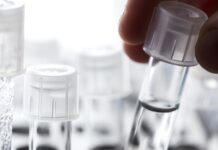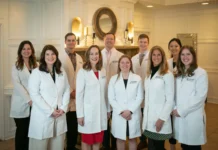Fabrication in MLC | Declaration of Fabrication | Full Detail – This is an important article. I’ve seen a lot of questions from young physicians who are concerned about fabrication. This prompted me to write a follow-up piece. Declaring a wound to be fabricated is a difficult process.
Wound fabrication is a very common phenomenon in medicolegal cases. This practice has become quite prevalent even in modern-day due to various reasons such as the rise of new technologies, lack of forensic laboratories, and also because of the unavailability of the accused during the investigation. Forensic pathologists should be aware of the fabrication of wounds in order to prevent their misdiagnosis or misinterpretation.
Wound Categories
Wounds are injuries to living tissues and organs caused by physical aggression or mechanical trauma. They heal within a period of time and leave scars. However, some wounds do not heal properly after receiving medical care. These wounds are known as chronic wounds.
Chronic wounds are defined as wounds that don’t heal normally because of underlying diseases, such as diabetes and cancer. The body reacts differently to various types of wounds. Some wounds heal very slowly, whereas others heal quite rapidly.
Medicolegal Death Investigator & Forensic Death Investigation
Fabricated wounds fall into two categories, i.e., real and simulated/fake. In the case of real wounds, the cause of injury would be visible, whereas, in fake ones, injury is caused by external force applied to simulate the appearance of genuine or natural injuries. The role of forensic scientists is to correctly identify these wounds using the appropriate tools and techniques.
A wound fabricated for the purpose of murder or causing death is known as a homicide. When a fabricated wound is found on the body of a deceased person then it becomes homicide. Forensic science plays a vital role in determining whether the wound was self-inflicted or inflicted by someone else. In some instances, the wound may look similar to a self-inflicted wound but can be distinguished by several means. Therefore, it is important for the forensic pathologist to consider all possible causes and circumstances before reaching a conclusion.

Declaration of MLC – Declaring an MLC
Remember that declaring an MLC fabricated will result in it being questioned. Why is it so frequently challenged? It’s because fabrication is a criminal in and of itself. If you claim fabrication, the other party will have a very good case. So, MLC, the party you just accused of fabrication will confront you.
This implies that even if it appears to be fabrication in sections A-1, F1, or L-2, you should not declare it. The reason for this is that these sections are insignificant, and no lawsuit will be filed under them.
Higher sections, such as A2 and above or F2 and above, should be declared fake if they are. This will discourage fabrications, and no innocent people will be imprisoned as a result of your actions. It’s a huge responsibility. Be truthful to yourself. However, you should take a few measures before claiming fabrication.
If you’re going to declare a wound faked, include other departments such as surgery and radiology and acquire their professional judgments. Until the investigation and expert opinions are completed, do not declare it fabricated. Keep it KUO (kept under observation). The reason for this is that you may see a gunshot wound on your forearm but the bullet is still within. You recommend X-Ray and state that it is not fake. However, when the X-Ray is returned, the bullet is visible on the bone, and it seems like the bullet was surgically implanted there. So, you understand it’s a fabricated bullet wound after watching the X-Ray, but you’ve already certified it is not fabricated.

If you now alter your position on the fabrication from not fabricated to fabricated (which you may do), the party will accuse you of taking money and changing your mind. This will generate a lot of questions and headaches. When you submit an X-Ray of a completely basic A-1 for formality and it comes back with a displaced fracture of the skull, it’s a similar situation. Your clinical results do not match the X-Ray, indicating that either the fracture was created after the MLC or the X-Ray technician was paid to create a bogus X-Ray. So, before declaring fabrication, always wait for all investigations to be completed.
If you’ve made up your mind about fabrication, seek expert advice. This includes specialists such as surgeons, dentists, and radiologists, among others. If you have sought professional advice, then accountability is shared. It’s also becoming increasingly improbable that you were paid to declare a lie (The party will always challenge it saying you took the money). Before declaring fabrication, wait for a formal answer from experts in the field. The same reasons apply as in investigations. Until then, keep it KUO.
Fabrication of wounds in Medicolegal Cases
Wound fabrication is often a very important issue during medicolegal investigations. The problem with some wounds is that they are not authentic. What kind of evidence can be used to prove or disprove the authenticity of wounds?
Wounds happen to people due to various reasons such as accidents, violence, surgery, illness, etc. Some wounds are fake or fabricated intentionally. These wounds are often presented in court as the real ones. This type of case is called Medicolegal fraud. Medicolegal fraud usually happens in medical negligence cases. For example, the doctor might fabricate a wound to make it appear that patient received treatment when he was not at fault.
Fabricated wounds are commonly used as false evidence in criminal proceedings. Forensic science experts study such issues to discover whether a wound is genuine or fabricated. In forensic medicine, wound examination is a major component of the medicolegal investigation. Doctors can examine the wound using a number of methods such as X-Ray, CT scan, MRI, ultrasound, etc. Such examinations can reveal certain characteristics of the wound that can help doctors determine its origin or authenticity.
Point to Ponder!
When it comes to medicolegal cases, do not listen to any senior, dispenser, DC, CEO, or Prime Minister of Pakistan. Because you are the only one who can conduct an investigation. Others will not seek your assistance. You’ll have to fend for yourself. In MLC, no one can force you to do anything. They are meaningless threats. The ramifications of declaring a fraudulent MLC are significantly harsher than anything the CEO or any other authority can do to you. So do what you think is correct.
You should be able to justify your Fabrication. When writing a description of the wound, including facts about why you believe it is fake. If the patient claims he was struck by a brick, but the wound is incised (from a sharp weapon such as a knife or blade), then specify in the description that the weapon reported by the patient and the wound do not match. This will assist you to recall why you said it was fabricated in the future. In addition, the board assessing your MLC in question will be aware right away that you saw the patient in detail. If your MLC is self-explanatory, they usually do not ask you to come in for an inquiry.





